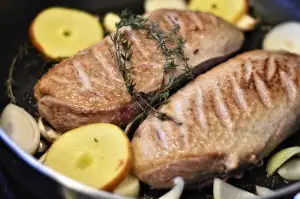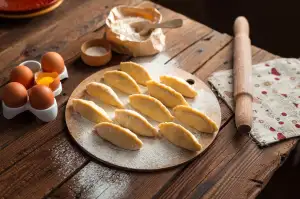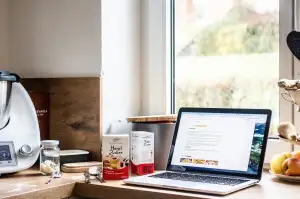Unleash Your Inner Chef: The Ultimate Curry Paste Recipe
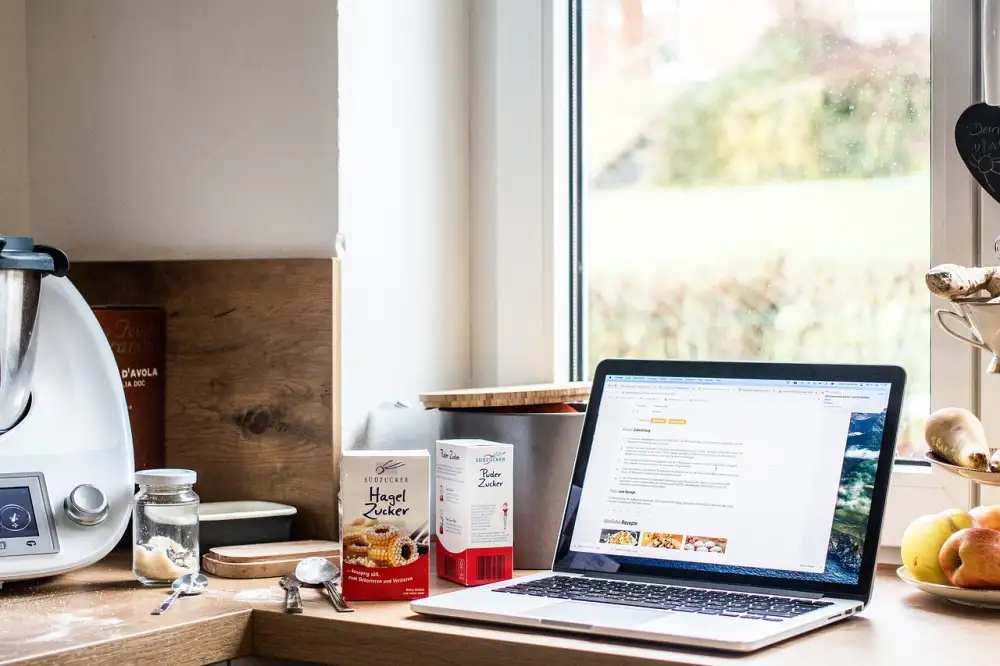
Classic Red Curry Paste
Classic red curry paste is the heart and soul of Thai cuisine. This aromatic paste, bursting with flavor, forms the base for countless curries, marinades, and stir-fries. While you can find pre-made versions at most grocery stores, nothing beats the vibrant taste and aroma of homemade red curry paste.
The beauty of making your own curry paste lies in the ability to customize it to your liking. Want a fiery kick? Add more chilies. Prefer a milder flavor? Simply reduce the amount. The basic ingredients for a classic red curry paste include dried red chilies, lemongrass, galangal, kaffir lime zest, shallots, garlic, shrimp paste, coriander seeds, cumin seeds, peppercorns, and salt.
The process begins by toasting the dried spices to release their fragrant oils. Then, all the ingredients are pounded together using a mortar and pestle, or a food processor, until a smooth paste is formed. The traditional method using a mortar and pestle is more labor-intensive but yields a paste with a superior texture and depth of flavor.
Once made, this vibrant red curry paste can be stored in an airtight container in the refrigerator for up to two weeks, or frozen for longer storage. It's your passport to a world of culinary adventures, ready to transform simple ingredients into flavorful Thai masterpieces.
Green Curry Paste Recipe
Green curry paste is the heart and soul of Thai cuisine. It's vibrant, aromatic, and delivers a kick of heat. While you can certainly find pre-made versions, nothing beats the flavor of homemade. Plus, it's easier than you might think!
To make your own green curry paste, you'll need a few key ingredients. Lemongrass, galangal, and kaffir lime leaves provide the base notes. Green chilies bring the heat, while cilantro stems, shallots, and garlic add savory depth. Shrimp paste adds a pungent umami punch, while white peppercorns and cumin provide warm spice. Finally, a touch of sugar balances the flavors.
Traditionally, all the ingredients are pounded together using a mortar and pestle, releasing their fragrant oils and creating a smooth paste. However, a food processor works well for convenience. Once made, this vibrant green paste can be stored in the refrigerator for up to a week or frozen for longer storage.
Green curry paste is incredibly versatile. Use it to create the classic Thai green curry, of course, but don't stop there! It's fantastic in marinades for chicken, fish, or tofu. Stir a spoonful into coconut milk for a quick and flavorful soup base. Add it to stir-fries for a burst of flavor, or mix it with mayonnaise for a spicy sandwich spread. The possibilities are endless!
Yellow Curry Paste: Easy
Making your own yellow curry paste might seem daunting, but it's surprisingly straightforward. Plus, the flavor is miles ahead of anything you can buy in a jar. The key is to use fresh, high-quality ingredients and don't be afraid to adjust the spice level to your liking.
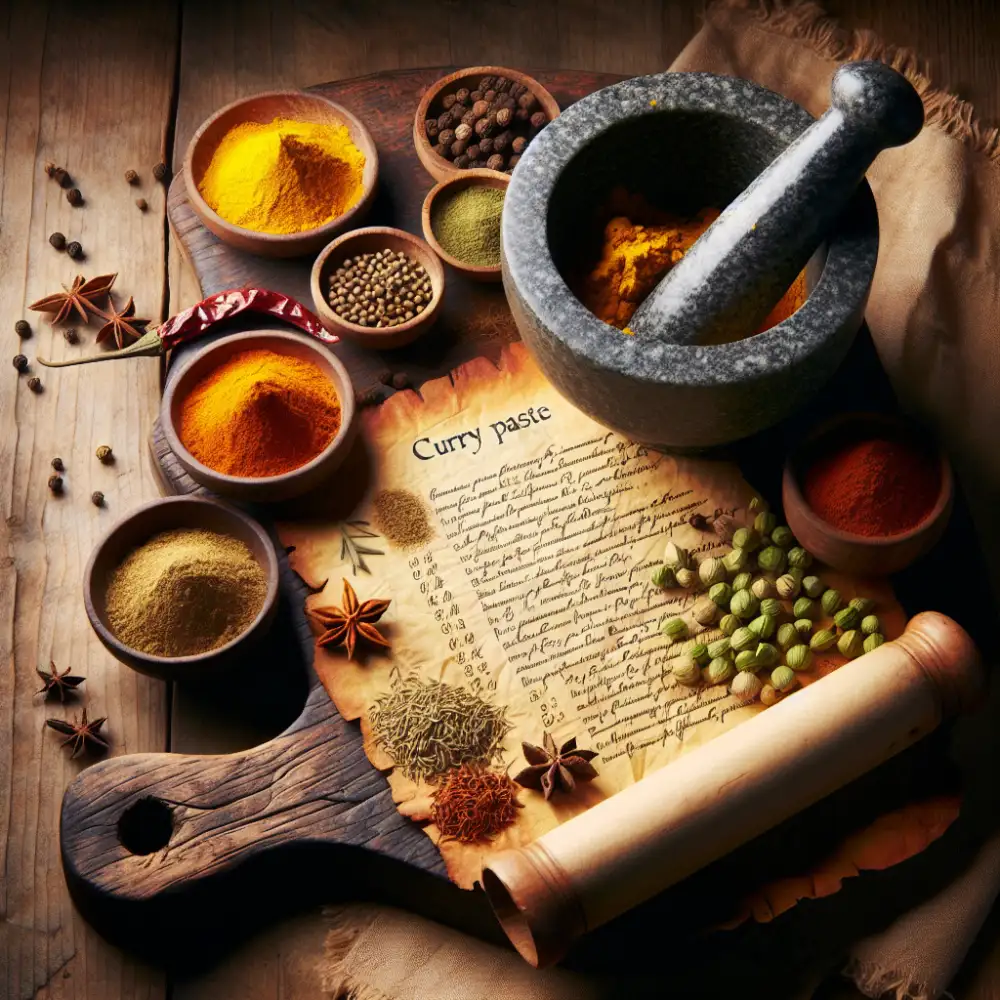
Start by gathering your ingredients: fresh turmeric root, ginger, lemongrass, garlic, shallots, chilies (use a mix of red and green for a more complex flavor), coriander seeds, cumin seeds, white peppercorns, and salt. You'll also need a little oil for frying the paste.
Once you have everything, it's time to get started. Roughly chop the turmeric, ginger, lemongrass, garlic, and shallots. You don't need to be too precise here, as you'll be blending everything later. Next, dry roast the coriander seeds, cumin seeds, and peppercorns in a pan until fragrant. This step helps to release their oils and deepen their flavor.
Now, combine all the ingredients, including the roasted spices, in a food processor or blender. Add a tablespoon or two of oil and blend until you achieve a smooth paste. You might need to stop and scrape down the sides of the blender a few times to ensure everything is evenly combined.
And that's it! Your homemade yellow curry paste is ready to use. You can use it immediately or store it in an airtight container in the refrigerator for up to two weeks. This paste is incredibly versatile and can be used as a base for curries, soups, marinades, and even dressings.
Massaman Curry Paste
Massaman curry paste, with its intriguing blend of sweet, savory, and spicy notes, is the heart and soul of the beloved Thai dish, Massaman curry. Unlike many other Thai curries, Massaman curry paste boasts a warm, slightly sweet flavor profile, thanks to the addition of spices like cinnamon, cloves, and cardamom, more commonly found in Indian cuisine. This unique fusion of flavors is a testament to the historical influences that have shaped Thai cuisine.
While you can find ready-made Massaman curry paste in most Asian supermarkets, crafting your own from scratch allows you to control the quality of ingredients and tailor the heat level to your liking. The process involves toasting whole spices to release their aromatic oils, then grinding them into a fine powder along with dried chilies, lemongrass, galangal, and other fragrant ingredients. Shallots, garlic, and shrimp paste add savory depth, while a touch of sugar rounds out the flavors.
Making your own Massaman curry paste does require a little effort, but the reward is a depth of flavor and aroma that surpasses store-bought versions. Plus, the aroma that fills your kitchen as the spices toast and grind is an experience in itself. Once you've experienced the difference homemade Massaman curry paste makes, you might never go back to the jarred kind again.
Panang Curry Paste
Panang curry paste is a popular Thai curry paste known for its rich, savory, and slightly sweet flavor with hints of peanut and spice. Unlike some other Thai curry pastes, Panang curry paste is not typically made with fresh turmeric root. Instead, it relies on ground dried spices for its vibrant color and earthy notes.
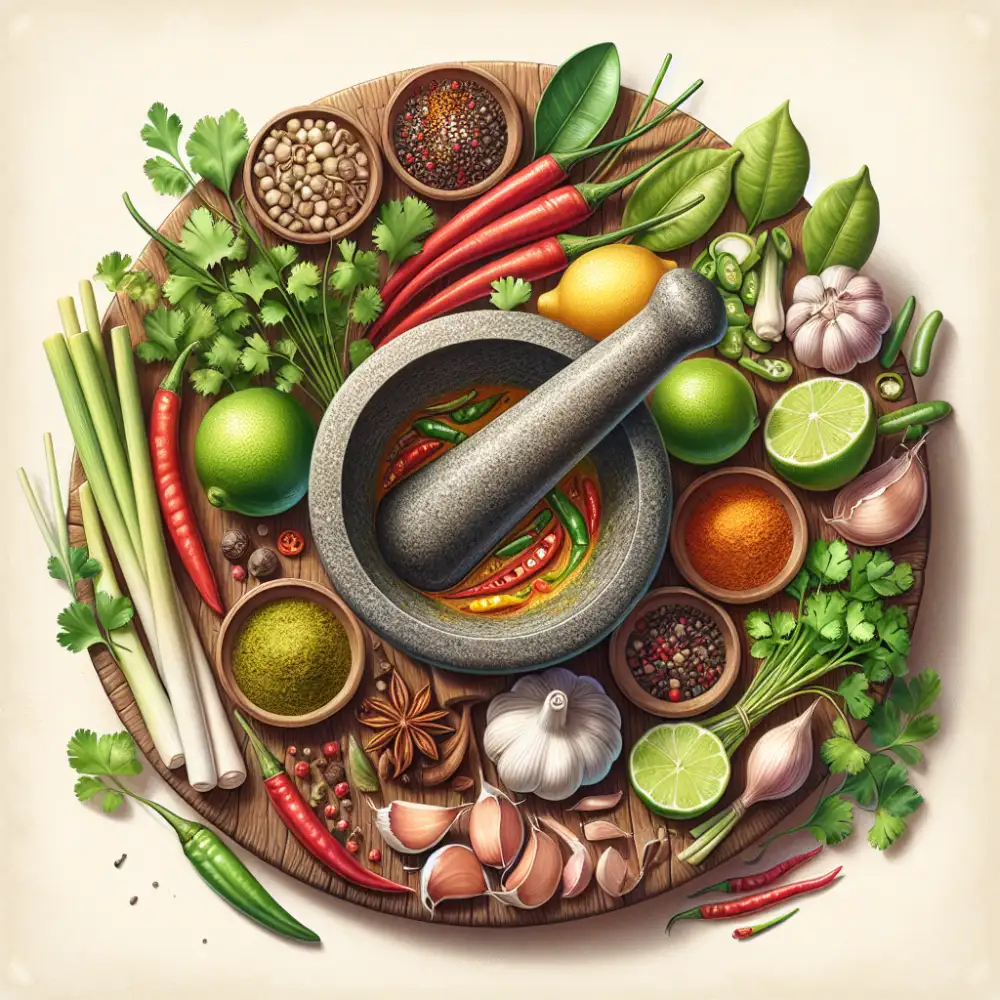
The base of a good Panang curry paste starts with dried red chilies, giving it a deep red color and moderate heat. These are often combined with other chilies like bird's eye chilies for an extra kick. The chilies are toasted and then ground into a powder, releasing their flavor and aroma.
Next comes a blend of aromatic spices, including coriander seeds, cumin seeds, and peppercorns. These are also toasted to enhance their flavor before being ground. The toasting process is essential in creating a complex and well-rounded flavor profile.
Shallots, garlic, galangal, and lemongrass are essential ingredients, providing a savory base and a hint of citrus. These are pounded together with the ground chilies and spices to form a smooth paste.
The star ingredient that sets Panang curry paste apart is roasted peanuts. They lend a creamy texture and a nutty, savory depth that balances the heat and spice. The peanuts are roasted until fragrant and slightly browned, then ground into a paste.
Finally, shrimp paste, salt, and sugar are added for seasoning and to round out the flavors. The shrimp paste adds a pungent, umami depth that is characteristic of many Thai curries.
Making your own Panang curry paste allows you to control the ingredients and tailor the spice level to your preference. It can be made ahead of time and stored in the refrigerator for up to a week or frozen for longer storage.
The magic of a curry paste lies not just in the ingredients, but in their perfect harmony, achieved through careful roasting, grinding, and a whole lot of love.
Elara Nightfall
Essential Ingredients
The heart and soul of any good curry lie in its paste, a vibrant blend of aromatics, spices, and chilies that form the foundation of flavor. While pre-made curry pastes are convenient, nothing beats the depth and complexity of a homemade version. Plus, you have complete control over the ingredients and spice level, tailoring it to your taste.
Fresh ingredients are key. Look for plump lemongrass stalks, vibrant ginger, and firm galangal. When it comes to chilies, the variety you choose will dictate the heat level of your paste. Bird's eye chilies pack a fiery punch, while Thai chilies offer a milder heat. Experiment with different types to find your perfect match.
Spices are the backbone of the paste, adding warmth, depth, and fragrance. Coriander seeds provide a citrusy base, while cumin lends an earthy note. Turmeric adds its signature golden hue and a slightly bitter edge, balanced by the sweetness of cinnamon and cloves. Toasting the spices before grinding enhances their flavor and aroma, creating a more robust paste.
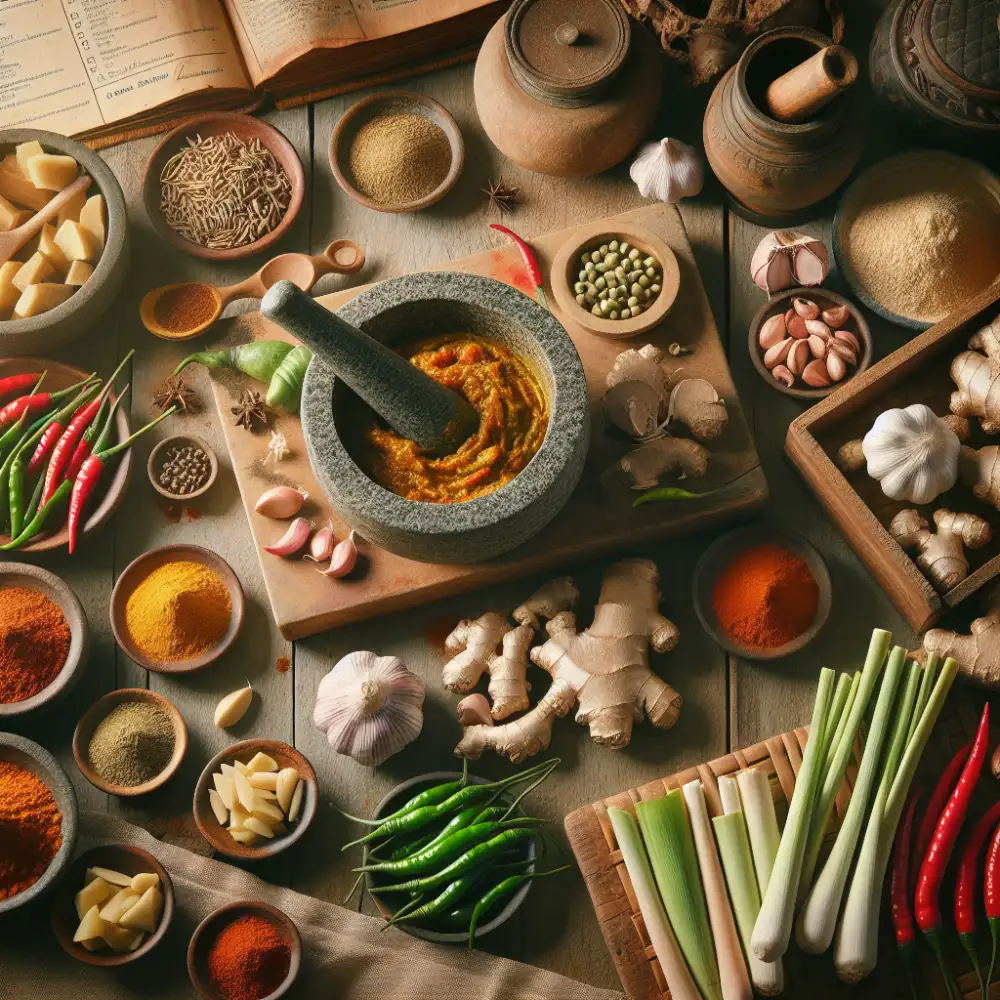

Finally, aromatics like shallots, garlic, and shrimp paste (optional) add savory depth and complexity. These ingredients are typically sauteed briefly in oil to release their flavors before being blended with the spices.
Variations and Substitutions
This recipe is a blueprint, not a straitjacket! Feel free to play around with the ingredients to match your taste and what you have on hand. Don't have fresh turmeric? No problem, use ground turmeric powder – just remember that a little goes a long way. Out of lemongrass? A squeeze of lime juice can add a similar citrusy tang. Want more heat? Crank up the chilies or add a pinch of cayenne pepper. You can also experiment with different chilies for unique flavor profiles. For a milder curry paste, simply remove the seeds from the chilies before blending. If you prefer a smoother paste, you can roast the ingredients before blending. This will deepen the flavor and create a richer texture. This recipe is incredibly versatile and can be used as a base for countless curry creations. So go ahead, get creative in the kitchen and make it your own!
| Feature | Homemade Curry Paste | Store-Bought Curry Paste |
|---|---|---|
| Freshness | Uses fresh ingredients | May contain preservatives |
| Flavor Control | Fully customizable to taste | Limited flavor options |
| Cost | Can be more affordable | Can be more expensive |
| Time Commitment | Requires preparation time | Quick and convenient |
Tips for a Flavorful Paste
The heart of any good curry lies in its paste. A flavorful curry paste can elevate your dish to new heights. Here are a few tips to make sure your paste packs a punch.
Fresh ingredients are key. Whenever possible, use fresh herbs, spices, and chilies. The flavor difference is remarkable. Don't be afraid to experiment with different types of chilies to adjust the heat level to your liking.
Toasting your spices is crucial for unlocking their depth of flavor. Dry roast whole spices until fragrant before grinding them. This extra step adds a layer of complexity and aroma to your paste.
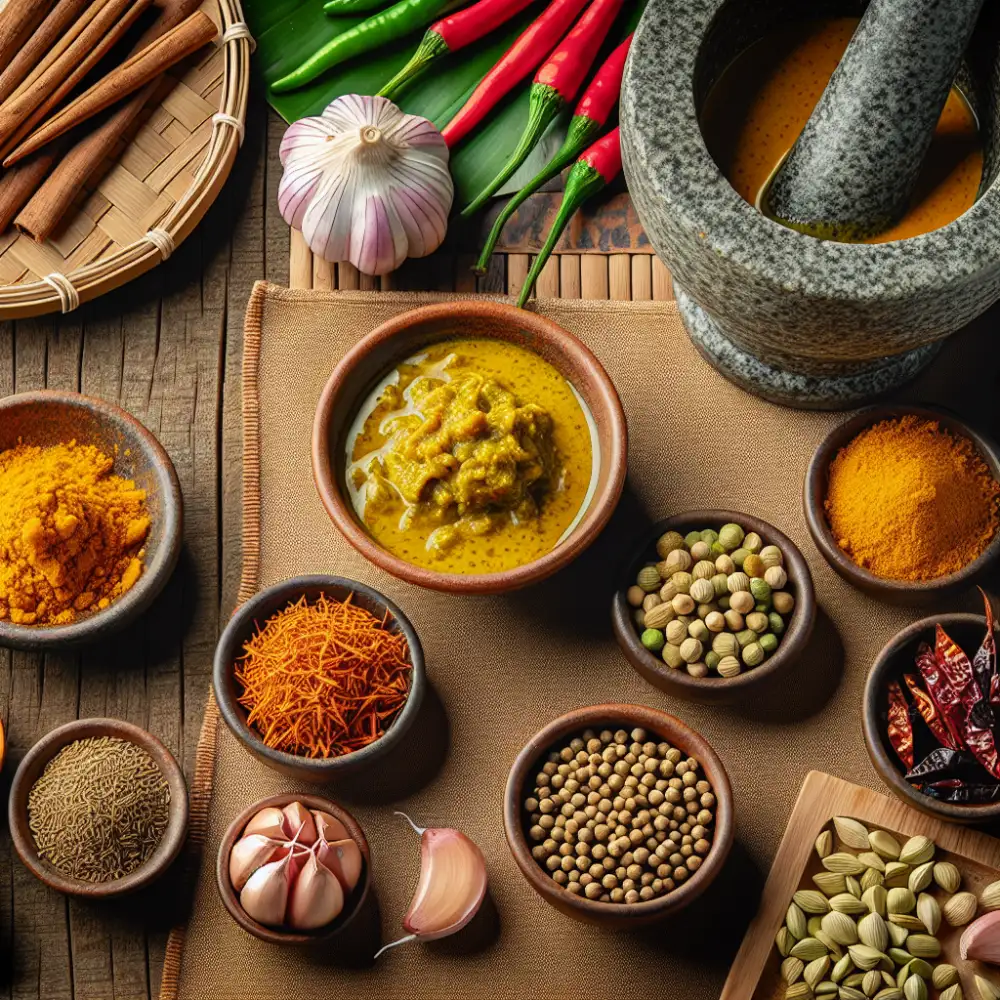
Balance is everything in a curry paste. Aim for a harmonious blend of salty, sweet, sour, and spicy elements. Adjust the quantities of ingredients like sugar, tamarind, or lime juice to achieve your desired flavor profile.
Patience is rewarded when making curry paste. Allow the paste to simmer gently, allowing the flavors to meld and deepen. This slow cooking process is essential for a well-rounded and flavorful curry.
Don't be afraid to customize. Once you've mastered a basic recipe, feel free to experiment with different ingredients and flavor combinations. Add a personal touch with ingredients like lemongrass, galangal, or shrimp paste.
Storage and Shelf Life
Homemade curry paste, bursting with fresh flavors, can elevate your culinary creations to new heights. Proper storage is crucial to maintain its quality and prolong its shelf life. Transfer the freshly made curry paste to an airtight container. Glass jars or high-quality plastic containers with tight-fitting lids are excellent choices. Ensure the container is clean and completely dry before adding the paste to prevent moisture from spoiling it. Store the curry paste in the refrigerator at a temperature below 40°F (4°C). When stored properly in the refrigerator, homemade curry paste can last for up to 2 weeks. For longer storage, consider freezing the curry paste. Portion the paste into ice cube trays or small freezer-safe containers for easy use. Frozen curry paste can last for up to 3 months without significant flavor loss. Once thawed, it is best to use the entire portion, as refreezing can affect the texture and taste. Remember to label the containers with the date of preparation to keep track of their freshness.
Using Your Homemade Paste
Your freshly made curry paste is your passport to a world of flavor! It's best used right away, but you can store any leftovers in an airtight container in the refrigerator for up to 5 days or in the freezer for up to 3 months.
Published: 10. 07. 2024
Category: Recipes

